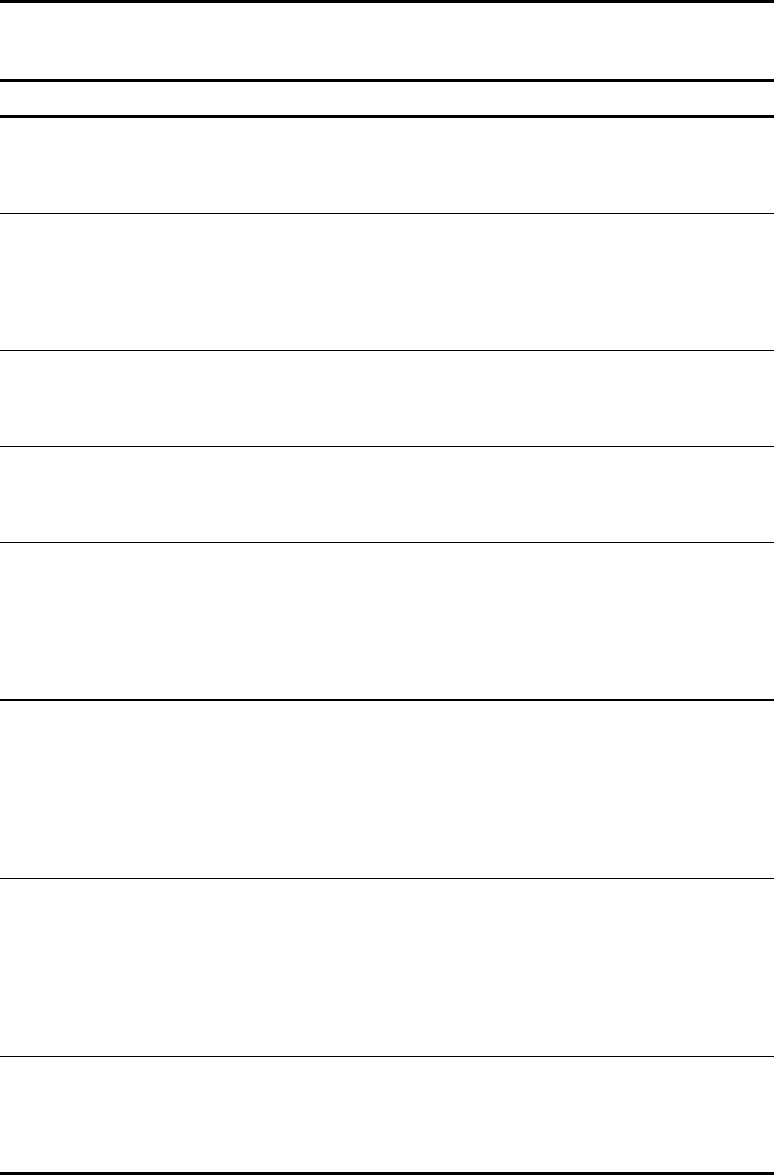ProLiant ML530 Servers Maintenance and Service Guide
Table Of Contents
- Compaq ProLiant ML530 Servers Maintenance and Service Guide
- Notice Page
- Table of Contents
- About This Guide
- Chapter 1: Illustrated Parts List
- Chapter 2: Removal and Replacement Procedures
- Electrostatic Discharge Information
- Symbols on Equipment
- Preparation Procedures
- Tower Model Front Bezel Door
- Rack Mount Bezel
- Access Panel
- Fans
- Removable Media and Mass Storage Devices
- Cable Routing Diagrams
- System Board Tray
- System Board Components
- Hot Plug Power Supplies
- Power Backplane Board
- Power On/Standby Switch
- Chapter 3: Diagnostics and Troubleshooting
- Diagnostic Tools Utility Overview
- Default Configuration
- Utilities Access
- Power On Self Test
- Diagnostics Software
- Steps for Diagnostics
- 100–199, Primary Processor Test Error Codes
- 200–299, Memory Test Error Codes
- 300–399, Keyboard Test Error Codes
- 400–499, Parallel Printer Test Error Codes
- 500–599, Video Display Unit Test Error Codes
- 600–699, Diskette Drive Test Error Codes
- 800–899, Video Board Test Error Codes
- 1100–1199, Serial Test Error Codes
- 1200–1299, Modem Communications Test Error Codes
- 1700–1799, Hard Drive Test Error Codes
- 1900–1999, Tape Drive Test Error Codes
- 2400–2499, Advanced VGA Board Test Error Codes
- 6000–6099, Compaq NIC Boards Test Error Codes
- 6500–6599, SCSI Hard Drive Test Error Codes
- 6700–6799, SCSI Tape Drive Test Error Codes
- 8600–8699, Pointing Device Interface Test Error Codes
- Array Diagnostic Utility
- Integrated Management Log
- Rapid Error Recovery
- Remote Service Features
- ROMPaq Error Recovery Options
- Compaq Insight Manager
- Chapter 4: Connectors, Switches, Jumpers, and LED Indicators
- Chapter 5: Physical and Operating Specifications
- Index

Diagnostics and Troubleshooting 3-39
Table 3-20
ADU Diagnostic Messages
Message Description Recommended Action
Accelerator
board not
detected
Array controller did not detect a
configured array accelerator board.
Install the array accelerator board on the array
controller. If an array accelerator board is
already installed, check for proper seating on
the array controller board.
Accelerator error
log
List of the last 32 parity errors on
transfers to or from memory on the
array accelerator board; displays
starting memory address, transfer
count, and operation (read and
write).
If there are many parity errors, you may need to
replace the array accelerator board.
Accelerator
parity read
errors: N
Number of times that read memory
parity errors were detected during
transfers from memory on array
accelerator board.
If there are many parity errors, you may need to
replace the array accelerator board.
Accelerator
parity write
errors: N
Number of times that write memory
parity errors were detected during
transfers to memory on the array
accelerator board.
If there are many parity errors, you may need to
replace the array accelerator board.
Accelerator
status: Cache
was
automatically
configured
during last
controller reset.
Cache board was replaced with one
of a different size.
Normal operations should continue.
Accelerator
status: Data in
the cache was
lost due to some
reason other
than the battery
being
discharged.
Data in the cache was lost, but not
because of the battery being
discharged.
Ensure that the array accelerator is properly
seated. If the error continues, you may need to
replace the array accelerator.
Accelerator
status: Dirty data
detected has
reached limit.
Cache still
enabled, but
writes no longer
being posted.
The number of cache lines containing
dirty data that cannot be flushed
(written) to the drives has reached a
preset limit. The cache is still
enabled, but writes are no longer
being posted. This error usually
occurs when there is a problem with
the drives.
Resolve problem with drives. The controller will
then be able to write dirty data to drives and
posted write operations will be restored.
Accelerator
status: Dirty data
detected. Unable
to write dirty
data to drives.
At least one cache line contains dirty
data that the controller has been
unable to flush (write) to the drives.
This problem usually occurs when
there is a problem with the drives.
Resolve the problem with the drives. The
controller will then be able to write dirty data to
drives.
continued










